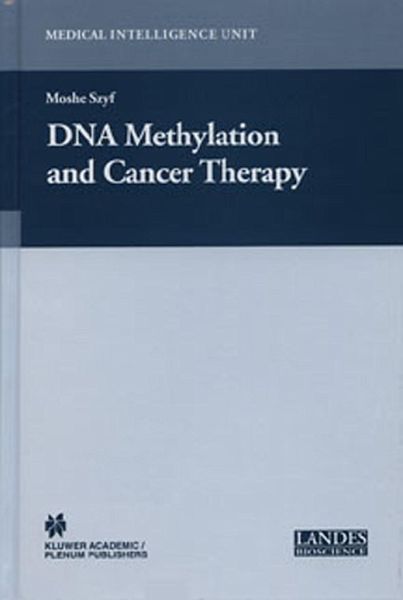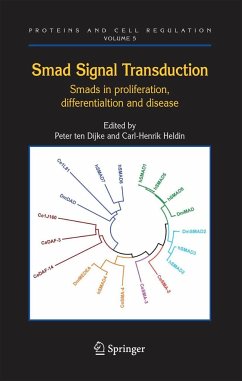
DNA Methylation and Cancer Therapy
Versandkostenfrei!
Versandfertig in 6-10 Tagen
113,99 €
inkl. MwSt.
Weitere Ausgaben:

PAYBACK Punkte
57 °P sammeln!
This book provides a comprehensive analysis of implications of DNA methylation on cancer diagnosis and cancer therapy. This unique volume focuses on cancer therapy by thoroughly dissecting the basic principles of DNA methylation in cancer from molecular mechanisms to clinical trials. The chapters are written by leading experts in the field and are designed to provide the reader with the necessary background to evaluate critically the potential of DNA methylation in cancer therapy. Key features of this book include discussions of the following topics:
The molecular machinery responsible for DNA methylation and their impact on gene expression and tumorigenesis.
The emerging relation between DNA methylation and chromatin modifying proteins.
How the relationship between DNA methylation and chromatin modifying proteins might clarify the mechanisms and therapeutic implications of aberrant DNA methylation in cancer.
Illustrations of the diagnostic potential of methylation in cancer and novel tools for using methylation profiling of cancers.
The therapeutic potential of the DNA methylation machinery and novel attempts to target the DNA methylation enzymes in anticancer therapy.
This book will be of interest to a wide audience, including oncologists, researchers and clinicians, and graduate students in the fields of oncology, molecular biology, and cancer therapy, as well as researchers and decision-makers in industry focusing on anticancer drugs and diagnosis.
The molecular machinery responsible for DNA methylation and their impact on gene expression and tumorigenesis.
The emerging relation between DNA methylation and chromatin modifying proteins.
How the relationship between DNA methylation and chromatin modifying proteins might clarify the mechanisms and therapeutic implications of aberrant DNA methylation in cancer.
Illustrations of the diagnostic potential of methylation in cancer and novel tools for using methylation profiling of cancers.
The therapeutic potential of the DNA methylation machinery and novel attempts to target the DNA methylation enzymes in anticancer therapy.
This book will be of interest to a wide audience, including oncologists, researchers and clinicians, and graduate students in the fields of oncology, molecular biology, and cancer therapy, as well as researchers and decision-makers in industry focusing on anticancer drugs and diagnosis.
NA methylation has bewildered molecular biologists since Hotchkiss discovered it almost six decades ago (Hotchkiss RDJ. Biol Cem 1948; 175:315-332). The fact that the chemical structure of our D genome consists of two components that are covalently bound, the genetic information that is replicated by the DNA replication machinery ana DNA methylation that is maintainea by independent enzymatic machinery, has redictably stimulated the imagination and curiosity of generations of mo Edular biologists. An obvious question was whether DNA methylation was a bearer of additional information to the genetic information and what was the nature of this information? It was tempting to speculate that DNA me thylation applied some form of control over programming of the genome s expression profile. Once techniques to probe the methylation profile of whole genomes as well as specific genes became available, it became clear that DNA methylation patterns are gene and tissue specific and that patterns of gene expression correlate with patterns of methylation. DNA methylation pat terns emerged as the only component of the chemical structure of DNA that exhibited tissue and cell specificity. This data seemingly provided an attrac tively simple explanation for the longstanding dilemma of how could one identical genome manifest itself in so many different forms in multicellular organisms? The DNA methylation pattern has thus become the only known factor to confer upon DNA a unique cellular identity.













